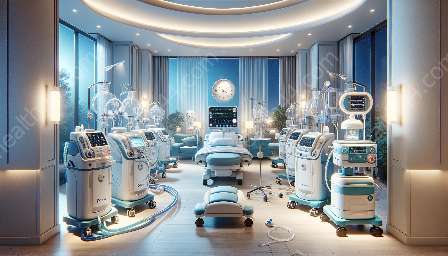Bronchoscopes are invaluable tools in the field of respiratory care devices and medical equipment, playing a crucial role in diagnosis, treatment, and monitoring of various pulmonary conditions. In this comprehensive guide, we will delve into the technology, applications, and advancements of bronchoscopes, examining their vital role in improving patient care and outcomes.
Understanding Bronchoscopes
Bronchoscopes are medical devices that allow healthcare professionals to visualize the airways and lungs for diagnostic and therapeutic purposes. They consist of a flexible or rigid tube with an attached camera and light source, enabling direct visualization of the respiratory tract.
Depending on the specific application, bronchoscopes may be equipped with additional features, such as channels for suction, biopsy tools, and therapeutic instruments. They are available in various sizes and configurations to accommodate diverse patient needs and clinical requirements.
The development of bronchoscopy dates back to the early 20th century, and over the years, technological advancements have greatly enhanced the capabilities and functionality of bronchoscopes. Modern bronchoscopes incorporate high-definition imaging, advanced illumination systems, and flexible maneuverability, offering healthcare professionals exceptional visibility and control during procedures.
Respiratory Care Applications of Bronchoscopes
Bronchoscopes play a pivotal role in the diagnosis and management of respiratory conditions, including lung cancer, chronic obstructive pulmonary disease (COPD), pneumonia, tuberculosis, and interstitial lung diseases. They are essential in performing bronchoalveolar lavage, transbronchial lung biopsy, endobronchial ultrasound, and other interventional procedures.
The use of bronchoscopes extends beyond diagnostic purposes, as they are also deployed in therapeutic interventions such as airway stenting, foreign body removal, and bronchial thermoplasty. Additionally, bronchoscopes are instrumental in assessing airway patency, evaluating mucosal abnormalities, and guiding the placement of endobronchial devices.
Advancements in Bronchoscopy Technology
The field of bronchoscopy continues to witness significant technological advances, driving improvements in diagnostic accuracy, procedural efficiency, and patient comfort. Some notable advancements include:
- Enhanced Imaging Capabilities: High-definition video bronchoscopes and advanced imaging modalities, such as narrow-band imaging and autofluorescence bronchoscopy, provide superior visualization of airway structures and abnormalities, aiding in early detection and precise characterization of lesions.
- Navigation and Guidance Systems: Integration of electromagnetic navigation, virtual bronchoscopy, and robotic-assisted platforms facilitates accurate navigation within the airways, enabling targeted biopsy and effective localization of peripheral lung lesions.
- Therapeutic Innovations: The introduction of bronchoscopic interventions like bronchial thermoplasty for asthma, endobronchial valves for emphysema, and advanced suction and biopsy tools for improved tissue acquisition has expanded the scope of bronchoscopic treatments.
- Patient-Centric Design: Innovative ergonomics, enhanced maneuverability, and user-friendly interfaces contribute to a more comfortable and efficient bronchoscopy experience for both patients and healthcare providers.
Integration with Respiratory Care Devices
Bronchoscopes are closely interconnected with a range of respiratory care devices, complementing their functionality and enhancing overall patient care. They are often integrated with ventilators, anesthesia machines, and lung function testing equipment, facilitating seamless transitions from diagnostic bronchoscopy to therapeutic interventions and respiratory support.
Moreover, bronchoscopes are integral components in the development and refinement of advanced respiratory care devices, contributing to the evolution of minimally invasive procedures, personalized treatment strategies, and precision medicine approaches in pulmonary healthcare.
Role of Bronchoscopes in Medical Devices and Equipment
The role of bronchoscopes extends to the broader realm of medical devices and equipment, with implications for innovation, standardization, and quality assurance. As essential tools in pulmonary medicine, bronchoscopes drive technological advancements and best practices in medical device manufacturing, regulatory compliance, and clinical training.
Furthermore, the ongoing evolution of bronchoscopy technology influences the design and performance specifications of medical devices across multiple specialties, contributing to interdisciplinary collaborations and fostering cross-functional expertise in device development and healthcare delivery.
In conclusion, bronchoscopes hold a prominent position as indispensable respiratory care devices and vital components of medical devices and equipment. Their continuous evolution and integration with advanced technologies are pivotal in shaping the future of respiratory care and pulmonary medicine, driving innovation, improved patient outcomes, and enhanced healthcare delivery.


